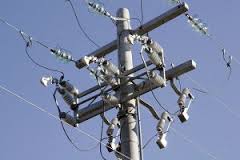Why go for huge hydel projects that are destroying the Himalayas? Why not develop smaller’off-grid’ units? Why have bijli projects destabilize Arunachal Pradesh? India would do well to integrate off-grid with grid options in their quest to achieve universal electrification, says a new study.
“The governments prefer to extend the grid even to those regions in which renewable energy sources are available in plenty,” says Debajit Palit, associate director, The Energy and Resources Institute (TERI), New Delhi, and co-author of the study due to be published July in Renewable and Sustainable Energy Reviews. “Off-grid options are reserved for those regions where grid extension is not possible.”
For every five people in rural South Asia, two live without electricity. The main approach is to extend the existing grid to the villages, or set up a mini-grid for a cluster of villages using renewable sources of energy. These approaches are seen as competing approaches, although they could complement each other, the study says.
The International Energy Agency predicts that off-grid and mini-grids can play a pivotal role in rural electrification. Over the next four years, they are together expected to account for more than half the capacity added.
In small Himalayan villages, grid expansion is not economically sustainable as there is not enough load at the village. Additionally, focus on village-centric electrification has resulted in skewed electrification profiles in which the governments claim high electrification rates at the village level, while the household electrification rates remain abysmally low.
Palit and Kaushik Ranjan, associate professor, TERI University, compared both grid and off-grid modes by carrying out an exhaustive survey of the literature on both methods. The study infers that both modes need to be integrated to achieve universal access to electricity.
“Government agencies are more concerned with extending infrastructure to the villages than on actual connection to end users (households, small businesses, etc.) and the supply of electricity,” Palit told a website.
Palit suggests rebalancing of options by combining grid and off-grid options. The governments should also come up with enabling policies for off-grid developers to operate and exit the business when the load has grown large enough to be integrated into the grid.
Ashok Sreenivas, senior research fellow at the independent Prayas Energy Group, says that “off-grid systems should complement grid systems and integrate with them as the grid expands.” According to him, this would help the off-grid developers who find it tricky to hook up their mini-grids to the main grid when it starts functioning in a village.
